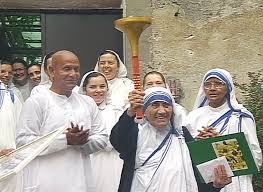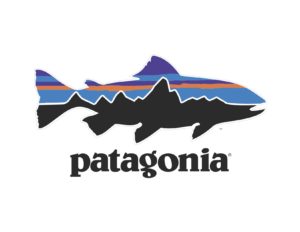Watching the fireworks from my lawn last night, I found myself thinking about a long-ago July 4th, and how it helped shape who I am today.
The year was 1976. I was a scrawny, long-haired, 19-year-old peace and human rights activist who had just finished my senior term at Antioch College.
I was broke and jobless. And, not having any better plan, I was going to hitchhike around the United States for the summer, shifting my itinerary depending on where the rides were going. Though I was pretty sure I wanted to see Denver and San Francisco, at least, I knew it was a big country with lots to explore, and I hadn’t seen very much of it so far. I didn’t know a thing about hitchhiking, and I hadn’t done any research about what to bring—though I did hook up briefly with a friend who was a very experienced hitchhiker, who showed me the basics of where to stand safely.
So off I went, with $200 in travelers checks in my pocket, and a bunch of inappropriate stuff packed in three inappropriate daypacks. I didn’t have a traveler’s frame pack, a sleeping bag, decent rain protection, a sun hat, or a lot of other things I should have thought about. Instead, I had an entire daypack filled with my creative output: poetry notebooks, my dream journal, and such. Plus a bare minimum of clothing and a bit of food.
I did, however, have a supply of thick markers for making hitchhiking signs that people could read at 60 miles per hour; even back then, I understood some basic marketing principles. 🙂
Setting off from my college town, Yellow Springs, Ohio, in late June, I stopped to visit family in New York before heading to Washington for the Bicentennial.
For weeks, I’d been growing more and more disgusted with the insane commercialism around the 200th anniversary of the Declaration of Independence—stuff like “Happy birthday, America, we’re having a sale on our new Fords because it’s your birthday,” accompanied by various patriotic songs.
I was, at that time, very alienated from mainstream American culture. The United States had finally pulled its last soldiers out of the Vietnam quagmire (which I’d been actively protesting since 1969), and Saigon had fallen only 14 months earlier. Examples of racism and sexism and homophobia and oppression of various minorities were easy to find. Police violence against progressives and racial minorities was a part of daily life, and we assumed we were being spied on.
I’d recently completed an internship at a socialist newspaper in Georgia, where the sense of “us against them” was palpable—and where the advertising base had largely abandoned the paper as soon as a safe, bourgeois counterculture paper started publishing, providing access to the lucrative hippie market around Atlanta without funding anti-government journalism. I saw business as the enemy of progress, and could not have named a single example of a business trying to do good, other than a couple of leftist bookstores and healthfood co-ops. I’d been a vegetarian for almost three years, and had discovered that this made me unwelcome in many restaurants.
In short, I was disenfranchised, cynical, militant, and even hostile. I had a pretty big chip on my shoulder.
There were a lot of events in Washington on July 4, 1976, including the grand opening of Union Station as a National Visitors Center, and of course, a huge birthday celebration. As I recall, there were several large public events around different parts of the Mall.
The one I was there to attend was a peace and take-back-the-government rally called by the People’s Bicentennial Commission—and organized, interestingly enough, under the “Don’t Tread on Me” rattlesnake banner that we’ve seen at a lot of Tea Party events in the past few years.
Aside: Columnist Ed Tant, who covered the event for the Athens, GA Observer, remembers the flag as quite integral to the demonstration:
The People’s Bicentennial rally 34 years ago still stands out in my memory for its hopeful patriotism and its message against the predations of plutocracy symbolized by the “Don’t Tread on Me” flag flying from the stage and from the crowd more than a generation before the same flag was appropriated by the tea party crew.
The Gadsden flag was named for Christopher Gadsden, a Revolutionary War hero from South Carolina. It was flown by American sailors and marines during the revolution, but the first political group to feature the rattlesnake flag at a Washington rally was the People’s Bicentennial Commission that flew the flag to warn against the growing power of multinational corporations…
During the People’s Bicentennial rally in 1976, activist Mary Murphy explained the symbolism of the rattlesnake flag, saying, “The rattlesnake has no eyelids, so it is ever-vigilant. Also, it never attacks without warning.”
I seem to remember seeing it at many rallies over the early 1970s, but it may be that the July 4, 1976 demonstration was the first to make it the rally’s official symbol. Somewhere, I might still have my copy of that button.[Aside ends]
Although some conservatives had worried publicly that this anniversary would be a magnet for terrorism and violence, what impressed me above all was the lack of that kind of drama. Only a few years after hard-hat construction workers had attacked war protestors in New York, after Chicago police had attacked protestors at the Democratic Convention, and after the country had been split into opposing camps on so many issues—multiple large gatherings, each representing a different segment of the political landscape from ultraprogressive to ultraconservative, and a huge apolitical middle that was just there to party out on the Bicentennial, all coexisting. All peacefully listening to their own sets of speakers and performers, sometimes coming into contact with each other at the edges, and even sharing food. As far as I could tell, there was no violence, no overt conflict at all, even as hippies in torn flag t-shirts encountered flag-waving conservatives.
And then, after all the rallies were over, we all left our separate public events and gathered around the Washington Monument—to peacefully watch one of the best fireworks displays I’ve ever seen. For one magical night, there seemed to be no great divide. Just a whole lot of people watching a grand fireworks display.
Hitching out of Washington on my way west the next morning, I encountered the generosity of people from both the protests and the parties. I made it back to Yellow Springs in three rides, with very little waiting time. It took only about a half-hour longer than driving would have taken.
And that was the beginning of my summer-long lesson that most Americans are good people who want to do the right thing…that the world is abundant and people will help others when they need it…and that the hostility I thought mainstream America had felt toward the counterculture was at least in large measure, confined to my own imagination.
I have taken the lessons of that day of unity and that summer of hope with me for 35 years now, and I trace a lot of who I am today and how I act in the world to the revelations of that time.








